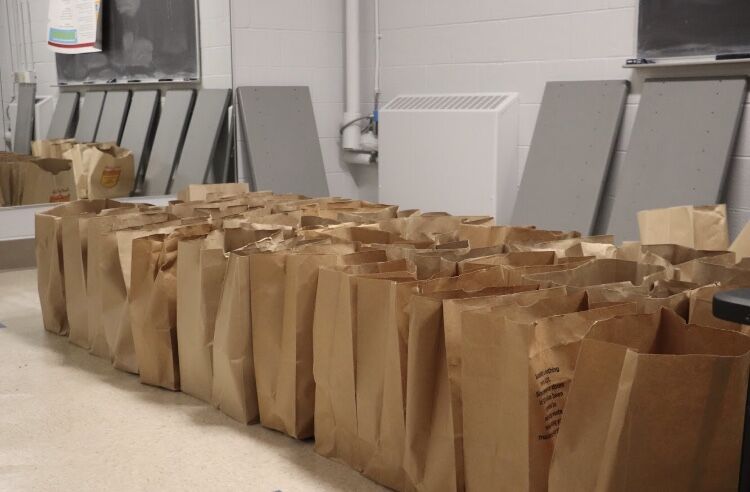SNAP program sees single largest increase in history
Meal kits packed by SHOP contain staple items intended to help a person in need eat three meals a day for two to three days.
August 22, 2021
Beginning in October, the average benefits for American families receive from the Supplemental Nutrition Assistance Program (SNAP) will rise more than 21 percent above pre-pandemic levels.
Unlike the increases seen in the last year as a result of the pandemic, this increase is permanent. It is also the largest single increase in the program’s history and will be indefinitely available to all 42 million SNAP users.
The average monthly per-person benefits will increase by $36.24 per person and comes as a result of the 2018 Farm Bill which directed the USDA to reevaluate the plan to update data on food prices, food composition and consumption pattern and current dietary guidance.
For the fiscal year 2022, Iowa’s projected total SNAP benefits will rise from $425 million to $541 million, making for a total increase of $116 million. The amount granted varies by state because of the differing food prices, food composition and consumption.
Christine Hradek is the senior manager for Iowa State University extension and outreach, where she coordinates nutrition education and healthy food access programs for Iowans with low income. Hradek said her job is a mixture of access intervention and education, working with all ages.
There are also programs that try to make healthy food easier to access like Growing Together Iowa, which is a partnership between Iowa State University Extension and Outreach and local food pantries. The program creates gardens to grow produce for local pantries during the growing season.
Hradek said a lot of participants in the SNAP program run out of their benefits before the end of the month and that is where food pantries come into play, but this increase can help stretch SNAP dollars to last nearly the entire month.
“It also creates the potential for flexibility in someone’s food budget,” Hradek said. “Right now we find a lot of folks who mostly buy their groceries using SNAP are incredibly careful about how much money they spend on food and often prices is driving their choices a lot more than they want it to.”
This mindset means trying new foods or buying perishable items are not in the cards for SNAP users, but The Thrifty Food Plan, 2021 “represents the costs of nutritious practical, cost-effective diet,” according to the USDA-Food and Nutrition Service.
And nutritious diet is a varied diet, Hradek said.
“We are talking about having a varied diet where you are eating a lot of different foods that you enjoy, you’re choosing foods from every food group and this change will allow people to make decisions based on preferences and health goals as well as costs,” Hradek said. “They won’t have to be quite so careful of the cost of the food they are purchasing.”
The Thrifty Food Plan has not been updated in decades and during that time dietary guidelines and food prices have changed. The American lifestyle has also changed since the development of the Plan.
“The original Thrifty Food Plan assumed that one member of the household was able to give most of their time to looking after that household,” Hradek said. “It did not assume all adults in a household were working, so making something like bread from scratch where it costs you pennies to get flower, water, we don’t do that anymore.”
The new plan represents current dietary guidance, current prices and the altering American lifestyle. While a long time coming, Hradek said the increase is valuable. Hradek recommends students struggling to qualify for SNAP to visit Iowa State’s on-campus food pantries, The SHOP and Food At First, which also offers foods.
“Right now there is a lot of temporary relief programs in place because of the pandemic, those presumably will end,” Hradek said. “This change to SNAP is permanent, it is not tied to the pandemic. Whether it is adequate once all those other relief programs fall away, I think is yet to be seen.”







